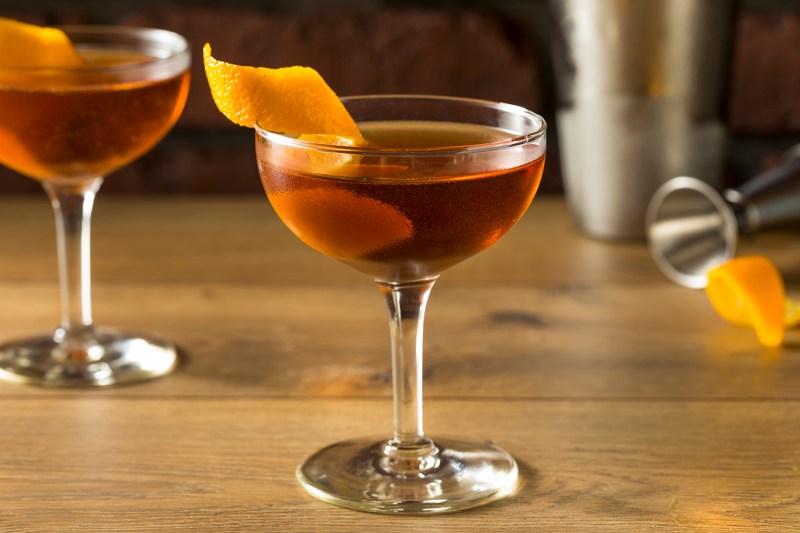When the weather outside is frightful, the brown bottles behind the bar tend to get a lot of attention (not that there’s anything wrong with that). And while nothing beats a bourbon on a cold winter’s night, sometimes you’ve got to shake (or, in this case, stir) things up a little. Enter the pleasantly sweet and delicately spiced Martinez: the ideal slow-sipping gin cocktail for imbibing by the fire.
Though it drinks like a Manhattan, the Martinez is actually the grandfather of the modern Dry Martini. Its precise origin story is lost to time, but the easy cocktail recipe first appeared in print in 1884, predating most modern classic cocktails. Vermouth cocktails were popular at the time, and this drink called for equal measures of gin and Italian (sweet) vermouth, making it both sweeter and less boozy than the modern Martini.
Martinez
Ingredients:
- 1.5 oz. Gin
- 1.5 oz. Sweet Vermouth
- 1 bar-spoon Maraschino Liqueur
- 2 Dashes Angostura Bitters
- Orange Peel, for garnish
Method:
- Add all ingredients except the orange peel to a mixing glass and stir over ice until well-chilled, about 20 seconds.
- Strain into a cocktail glass and express the orange peel over the top, then drop into the drink
Choose Your Weapons
For a three-ingredient drink (four, if you count the bitters), there are practically infinite ways to make your Martinez, and when shopping for supplies you’ll have some decisions to make. Your first hurdle will be deciding on a gin. There are practically endless options, here, in terms of brand and style, but a solid London Dry gin is your best bet. The strong notes of pepper and juniper won’t be bullied by the vermouth. For a slightly bolder variant, put your trust in Old Tom, a rich, malty style of gin that’s often slightly sweetened (sweet like bourbon, not like candy), lending the liquor a little more flavor and body. If you go this route, consider tweaking your ratio from equal parts to two parts gin, one part vermouth.
Speaking of vermouth, there are plenty to choose from, varying widely in flavor and style. Carpano Antica is a popular option, with a fruity profile and notes of vanilla, and Cocchi di Torino will give your Martinez a pleasant, spicy bite. Different combinations will yield different cocktails, but we promise it’ll be a delicious experiment.
The final ingredient in your Martinez is a bar-spoon of Maraschino liqueur for both body and balance. This ingredient scares people off, but don’t let the name fool you — it has nothing in common with the sickly sweet, neon-red cherries of Shirley Temple infamy. Maraschino is a dry and slightly bitter liqueur distilled from Marasca cherries that adds flavor and funk to a good many classic cocktails. A bottle will last you a lifetime, and you’ll want one on hand when summer rolls around and you’re shaking up Hemingway Daiquiris on the patio.




